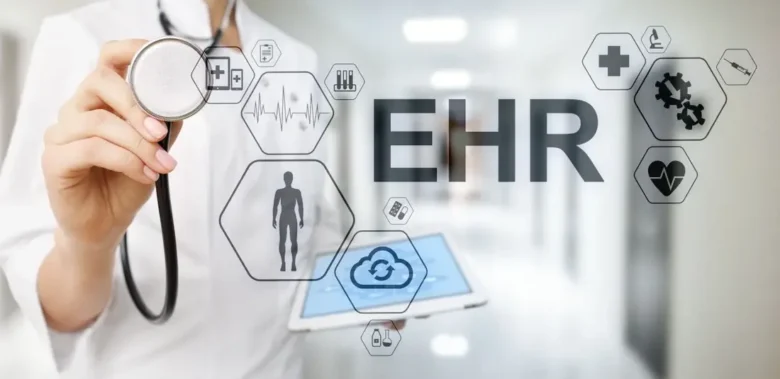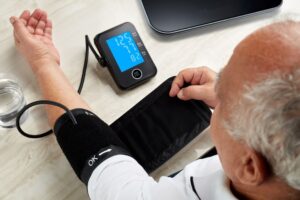Over the past two decades, electronic health records (EHRs) have sparked a digital revolution in healthcare. Healthcare professionals no longer rely on paper medical records and handwritten notes to manage patient data. EHRs have revolutionized the way healthcare professionals store, retrieve, and exchange patient information, improving efficiency and collaboration. These technological advancements have improved patient safety, clinical outcomes, and administrative processes and reduced healthcare costs.
As healthcare systems worldwide embrace digital technologies, it is crucial for both healthcare professionals and patients to understand the impact and potential of EHRs. EHRs are more than just a technological upgrade; they are transforming the way medical information is distributed within the healthcare ecosystem.
Introduction: EHRs are Transforming Healthcare:
The shift from paper to electronic health records has radically transformed healthcare worldwide. Comprehensive EHR systems have improved patient care, operational efficiency, and clinical decision-making within healthcare institutions. These digital systems store patient data and provide physicians with quick access to medical histories, test results, imaging studies, and treatment recommendations. In addition to digitizing paper data, this transformation includes clinical decision support, automated drug interaction notifications, and integrated communication systems that connect medical professionals treating the same patients. During health crises like the COVID-19 pandemic, timely access to patient data and seamless collaboration between care teams are crucial for efficient treatment.
Electronic Health Records (EHRs)—What Are They?
Electronic Health Records (EHRs) contain medical histories, diagnoses, prescriptions, treatment plans, vaccination dates, allergies, radiology images, and laboratory test results. EHRs are designed to be shared across care settings and provide a complete picture of a patient’s health. These advanced care systems integrate clinical documentation, order entry, billing, scheduling, and reporting. Modern EHR solutions keep patient information safe and use cloud technology and better security features to allow approved healthcare providers in different places and specialties to access this information. These solutions utilize artificial intelligence (AI) and machine learning (ML) algorithms to help physicians make evidence-based, patient-specific clinical decisions.
The Benefits of Electronic Health Records in Modern Healthcare:
Electronic Health Records (EPRs) benefit physicians, patients, and healthcare systems. EHR systems improve care coordination by allowing multiple physicians to access the same patient data, minimizing duplicate tests and ensuring continuity across specialties. Automatic reporting of medication adverse events, allergies, and urgent test results improves patient safety. Healthcare professionals spend less time searching for patient information and more time providing immediate treatment, increasing clinical efficiency.
Electronic prescribing, integrated with electronic health records (EPRs), eliminates concerns about handwriting recognition and automatically checks for drug interactions and dosages, reducing medication errors. EHRs enable healthcare institutions to identify patterns, analyze outcomes, and implement preventive treatments for large patient populations.
EHR Implementation Challenges:
Electronic health records (EHRs) offer numerous benefits, but healthcare institutions must implement them correctly. Implementing an EHR requires significant initial investments in software licenses, hardware infrastructure, training, and maintenance, which can place a significant burden on healthcare budgets. As healthcare professionals master new processes and complex software interfaces, they often experience decreased productivity during their shifts.
Interoperability between healthcare institutions using different systems can be challenging because EHR manufacturers use different data formats and communication protocols. User acceptance and reluctance to change pose another major challenge, especially for healthcare professionals who have relied on paper-based systems for years and are reluctant to change processes. When migrating data from legacy systems, historical patient data must be carefully transferred without loss or corruption, which can take some time.
The Future of Electronic Health Record (EHR) Technology:
EHRs are poised to revolutionize healthcare and patient outcomes. Advanced artificial intelligence and predictive analytics promise to identify disease risks before symptoms emerge. Speech recognition and automated transcription leverage natural language processing to improve the accuracy and efficiency of medical records. Patients can send real-time health data from mobile phones and wearables to their EHRs. Blockchain technology can enhance data security and interoperability, giving patients greater control over their health data and ensuring secure communication between certified healthcare providers. EHR systems can automatically record virtual visits and remote monitoring, simplifying the integration of telehealth.
Conclusion:
With EHRs, healthcare becomes more efficient, organized, and patient-focused. Healthcare institutions worldwide are leveraging these digital technologies to improve patient outcomes, reduce medical errors, and increase operational efficiency. Comprehensive EHR systems can enhance patient care and help healthcare institutions compete in the digital healthcare landscape. EHR systems equipped with artificial intelligence, machine learning, and advanced analytics have a bright future. The widespread use of electronic health records (EHRs) can improve patient access to personal health information, facilitate coordination among healthcare providers, and ultimately improve health outcomes through specialized, collaborative care.
FAQs:
1. What is the difference between an electronic health record (EHR) and an electronic medical record (EMR)?
An electronic health record (EHR) gives a detailed picture of a patient’s health status and can be shared across multiple healthcare institutions, while an electronic medical record (EMR) is typically limited to a single clinic or organization and contains provider-specific information.
2. Are electronic health records secure and private?
U.S. EHR systems must comply with the Health Insurance Portability and Accountability Act (HIPAA) and protect patient data through encryption, access restrictions, audit trails, and other measures.
3. Do patients have access to the EHR?
Most EHR systems offer a patient portal for viewing medical records, test results, appointment schedules, and communicating with physicians, which helps patients make decisions about their care.
4. How do EHRs improve patient care?
EHRs improve the quality of care through automated clinical decision support, drug interaction alerts, preventive care reminders, provider coordination, and a complete medical history to support diagnosis and treatment.
5. What happens if an EHR fails?
Backup systems, downtime protocols, and contingency plans (including paper documentation and access to emergency data) can help healthcare organizations maintain patient care during system outages.




